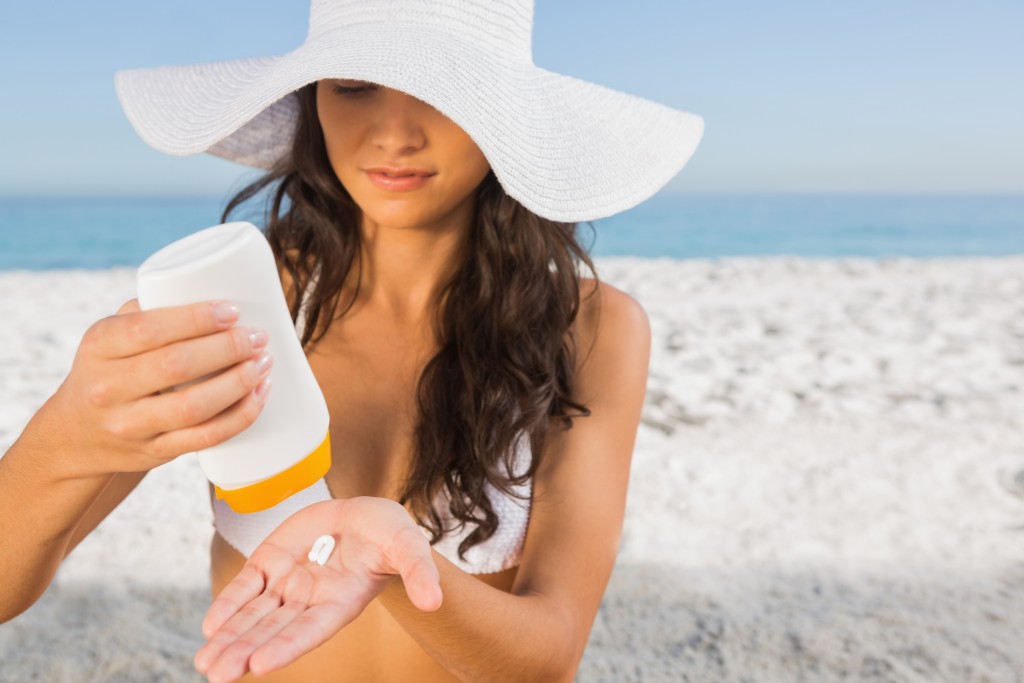Summer Skin Safety
We all want to enjoy the warmth of summer. Reduce your risk of melanoma: keep the sun’s harmful rays at bay.

| MELANOMA: THE STATS In 2013, there were 76,690 new cases of melanoma in the U.S. Melanoma accounts for only a small percentage of skin-cancer cases, but is responsible for most skin-cancer deaths. There were 9,480 deaths from melanoma in 2013. Source: National Cancer Institute |
After shivering through this year’s hard winter, we all want to rush outdoors and enjoy the warmth of summer. Before you do, though, remember to protect your body’s largest organ: your skin.
The sun is a powerful lure, but it’s also a source of danger. Its ultraviolet (UV) rays can damage your skin in as little as 15 minutes. “Sun exposure is definitively linked to skin cancer—both the less invasive cancers and melanoma, the most serious skin cancer,” says Franz Smith, M.D., a surgical oncologist at Saint Barnabas Medical Center.
It only takes a few simple precautions, fortunately, to stay safe from the sun in outdoor summer activities. Here are six ways to help protect yourself and your family:
1 Slather on the Sunscreen. “Using sunscreen is critical for protecting your skin,” says Dr. Smith. Sunscreen contains chemicals that, when absorbed by the skin, reflect or scatter sunlight’s UV rays. Their effectiveness is rated by a number called a sun protection factor (SPF): the higher the number, the more protective the product. “I recommend an SPF 30 sunscreen for everyone,” Dr. Smith says. “You generally don’t need anything higher, as long as you reapply it every two hours.”
| FREE SCREENINGS MAY SAVE YOUR SKIN More than 3.5 million cases of skin cancer are diagnosed yearly in the United States, according to the American Cancer Society. But only a small percentage of these are melanoma, the most serious kind of skin cancer. The incidence of melanoma is on the rise, says Franz Smith, M.D., a surgical oncologist at Saint Barnabas Medical Center. “Thankfully, though, that is largely due to better detection,” he says. “So although the absolute numbers are increasing, the lesions are often caught when they are thinner, which is a good thing. Thinner melanomas are easier to treat with less extensive surgery, and the chance of their spreading is lower.” Early detection depends on regular screening, both by oneself and by a medical professional. To that end, throughout May and June, Saint Barnabas Medical Center—in conjunction with The Department of Psychosocial Support Services, the Cancer Program at Saint Barnabas, and area dermatologists—will be conducting free skin cancer screenings on Mondays. It’s part of the American Academy of Dermatology’s “Melanoma Mondays” campaign. The screenings will be offered in Suite 401 in the Atkins Kent Building, 101 Old Short Hills Rd., in West Orange. All are welcome and encouraged to attend, especially those with changing or abnormal-looking moles. The skin-cancer screenings are available by appointment only. To register, please call 973.322.2671. |
Sunscreen works best when you apply it 30 minutes before you go outside. You need it even on slightly cloudy or cool days. Get help for hard-to-reach places like your back. In addition, some cosmetics and lip balms contain some of the same chemicals used in sunscreens. Choose those when possible, but if they have an SPF of no more than 15, supplement them with sunscreen.
2 Dress for Skin Success. “Anyone out in the sun should dress appropriately,” Dr. Smith advises. Clothing, especially loose-fitting, longsleeved shirts and long pants made from tightly woven fabric, offers protection from the sun’s UV rays. These days some clothing is sold with information from the manufacturer on its “ultraviolet protection factor” (UPF ), a rating of its protective power against these rays.
When you’re at the beach, try to wear a T-shirt or a beach cover-up when you aren’t in the water. And remember that wet T-shirts are less protective than dry.
Keep your head and face covered as well. You’ll get the most protection from a hat with a brim all the way around that shades your face, your ears and the back of your neck. Choose tightly woven fabrics such as canvas in preference to straw hats or other hats with holes that let sunlight through. And if a baseball cap is your preference, take care to protect your ears and the back of your neck by wearing clothing that covers those areas, by using sunscreen with at least SPF 30, and/or by staying in the shade as much as possible.
3 Keep an Eye on Your Eyes. Sunburned eyes are at increased risk for cataracts, so wear sunglasses that protect your eyes from UV rays. They also protect the tender skin around your eyes from sun exposure. Wraparound sunglasses are a great choice, because they block UV rays from sneaking in from the side.
4 Shun the Brightest Sun. “Avoid the peak hours from 10 a.m. to 4 p.m. as much as possible,” Dr. Smith says. When you are out in the midday sun, you can reduce your risk of skin damage and skin cancer by seeking shade under an umbrella, a tree or other shelter.
5 Check It Out. Your skin, that is. “Part of good overall health maintenance is to inspect your skin regularly,” says Dr. Smith. Examine your skin during showers and in the mirror for moles that change or look abnormal, and ask a loved one to inspect hard-tosee areas such as your back and neck. “Also look at your scalp, especially if you’re a man with thinning hair,” he says. “That area is often overlooked.”
6 Be a Role Model. “Be mindful of children,” says the doctor. “Most sun exposure—up to 80 percent, in fact—occurs before age 18. So set a good example for your kids by taking necessary precautions.” —D.L.

